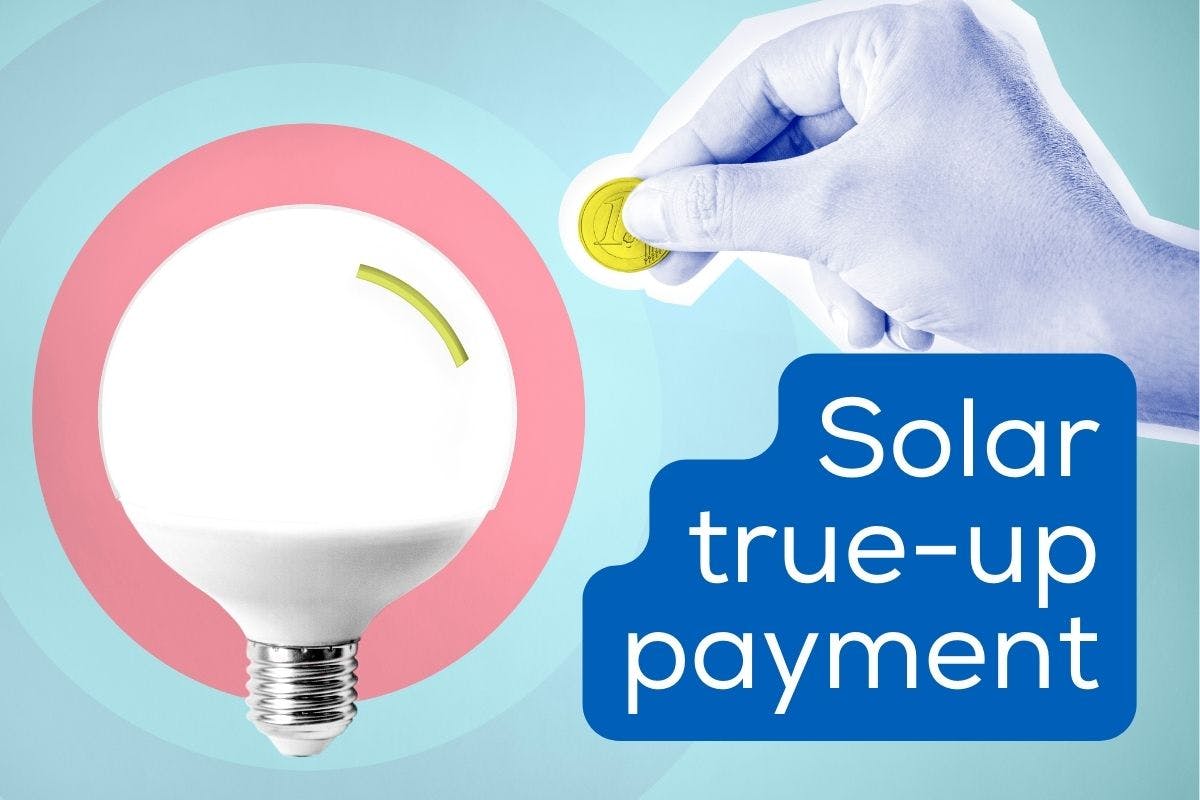In the wonderful world of solar energy, a true-up payment is one of the many ways in which you can be compensated for producing emission-free power on your roof or property and sharing it with the utility.
Applicable to those with grid-tied solar panels, in this article, we will define solar true-up payments, break down how they work, and outline everything you need to know and expect when collecting your first solar true-up payment.
But First… A Quick Look at Net Metering
To “truly” understand how solar true-up payments work, you must first have a general concept of how solar and the grid work together. In many parts of the country where solar has grown in popularity, net metering programs primarily drive the relationship between residential solar producers and local utilities.
While you are free to read our full, in-depth guide to net metering for home solar, there are a few key things you will need to know to understand how true-up payments work. They are as follows:
- When solar power is shared with the grid, local utilities with net metering policies compensate the energy producers in the form of electricity bill credits.
- If you produce more kilowatt-hours of solar in one month than your home’s electricity consumption, the extra net metering credits may “roll over” to the next month.
- At the end of 12 months, any accumulated solar credits may be redeemed in the form of a true-up payment.
Solar True-Up Payment Definition
By definition, a solar true-up is the annual payment that an energy utility will send a solar producer for the accumulation of credits not yet redeemed on monthly bills. Whereas the precise details of how specific utility solar programs work vary across the country, most true-up payments follow generally the same structure, format, and procedures. In some areas, true-up payments may not exist when bill credits are allowed to roll over indefinitely.
When is a solar true-up payment made?
In most utility service areas, solar true-up payments are made at the “end of a solar billing cycle,” or one year after the panels are first connected to the grid. For instance, if your panels are activated on June 5, 2024, you would receive your first true-up payment on June 5, 2025 if excess bill credits had accumulated during your inaugural year with solar.
Across the country, some utilities may choose to make true-up payments at different times, such as the end of the calendar year (i.e. December 31st) or at the end of the month (rather than the exact day) when the panels were originally installed.
How much is a solar true payment?
Of all the ways to make money with solar panels, a true-up payment is not something that you should bank on, as they typically are not very high in value. Even if you have accumulated a significant amount of net metering credits at the end of your solar billing cycle, solar true-up payments are considered “leftover” and usually redeemed at much lower rates than ordinary month-to-month credits.
For this reason, most residential solar energy systems are designed to produce roughly the same amount of power (or slightly more) that the home consumes each year. With this, homeowners can “eliminate” monthly payments for utility-supplied power while also not overpaying for an oversized system.
How is a solar true-up calculated?
Unlike monthly net metering credits, the excess electricity credits redeemed in a solar true-up payment are typically calculated using “avoided cost rates.” According to the Solar Rights Alliance, this will typically translate to two to four cents per kilowatt hour, which is significantly lower than average US retail electricity prices (roughly $0.17 per kilowatt at the end of 2023).
Step-By-Step Solar True-Up Example
To recap and fully illustrate how solar true-up payments work, let’s walk through a hypothetical customer experience in which you receive a true-up payment from the local electric utility after one year with solar panels.
Step 1: Your solar panels are installed and interconnected to the utility grid. For this example, let’s say this occurs on February 2nd, 2024.
Step 2: The solar power you produce and share with the grid is credited to your electricity bills each month. Throughout February, March, April, May, and June, your solar production is roughly equal to your home’s electricity consumption, with slight month-to-month variance.
Step 3: In July, you spend two weeks visiting family and friends while your solar panels stay home and produce electricity. Since you are not at home consuming much power, you then accumulate a significant amount of solar credits that can be applied to future monthly energy bills.
Step 4: Throughout the Fall, you then make a few home energy efficiency improvements that lower your monthly power consumption and help maintain this surplus of solar bill credits.
Step 5: When February 2nd, 2025 rolls around, you find that you still have approximately 150 kilowatt-hours of solar credits to be redeemed. Here, your utility would then credit your account for the accumulated solar surplus at their predefined true-up rate.
Things to Consider and Next Steps
As we mentioned above, it is very important to understand that solar true-up payments work differently with every utility and policies vary greatly from state to state. Before you go solar, it is good to have a basic understanding of your local utility's specific renewable energy policies to determine whether or not solar will be worth it for you.
If you have any questions regarding true-up statements or any of the ways in which solar can help reduce your home's electricity expenses, Palmetto is here to help. Speak with a solar advisor today or learn more in our residential solar energy resource library.

